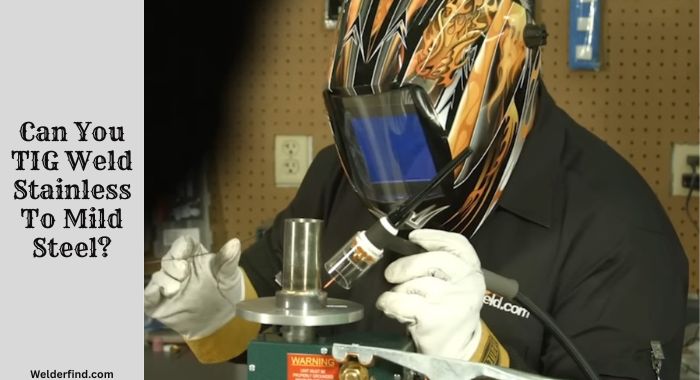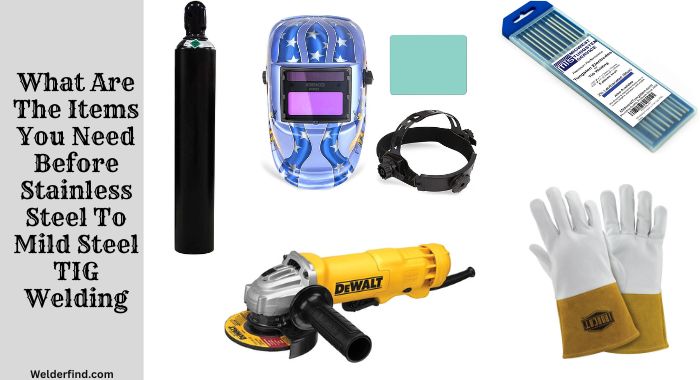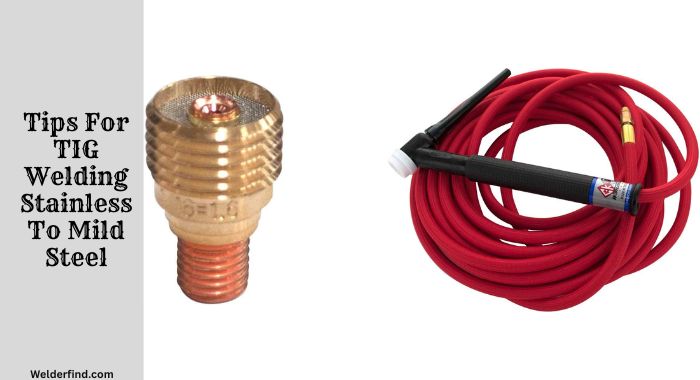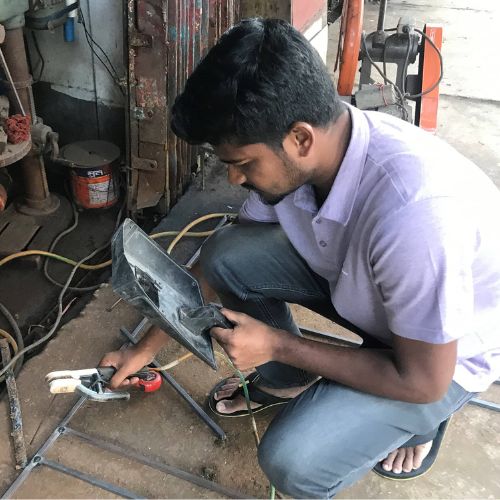Welding stainless steel to mild steel is a process that requires precision, skill, and special techniques to get the perfect weld. The TIG welding process is popular for welding stainless steel to low-carbon or mild steel because it offers higher accuracy and control.
This article will discuss the steps needed to weld stainless steel to low-carbon steel successfully.
We’ll discuss the types of materials needed, safety considerations, and the advantages of TIG welding.
In the end, you’ll have the know-how and confidence to start TIG welding stainless steel to plain carbon or mild steel.
Can You TIG Weld Stainless To Mild Steel?

Yes, it is possible to TIG weld stainless steel to low carbon or mild steel. This process is known as dissimilar metal welding. It’s used in several applications, including automotive and aerospace engineering.
TIG welding is a great way to join stainless steel with low-carbon steel and is used in many industries. With the correct technique, it is possible to create solid and durable welds that can last for many years.
What Are The Items You Need Before Stainless Steel To Mild Steel TIG Welding?

The following items are required before welding stainless steel to plain carbon or mild steel:
- A TIG welder and consumables include TIG electrodes, filler rods, and shielding gas.
- Clean surface-free from oil, dirt, rust, paint, and other contaminants.
- A clean, dry cloth for wiping the surface before welding.
- Appropriate safety gear, such as welding gloves, helmets, and protective clothing.
- Stainless steel filler metal and TIG rod for the job.
- Brush to eliminate slag or spatter after welding.
- Acetone or other cleaning agents to clean and prepare the surface for welding.
- Grinder for cleaning and preparing the surface for welding.
- Deburring tool for removing any sharp edges or burrs from the weld.
- An angle grinder for grinding and finishing the weld.
How Do You TIG Welding Stainless To Mild Steel?
Now, let’s check out the step-by-step processes of stainless steel to plain carbon steel through TIG welding:
- Firstly, prepare your materials. Clean the surface of both metals with a wire brush and acetone to remove dirt, oil, and other contaminants.
- Then set up your TIG welding machine. Ensure the settings are correct and the welding rod is compatible with the materials you are welding.
- Put on your safety gear, including a welding helmet, gloves, and a protective apron.
- Begin by striking an arc with the tungsten electrode and the base metal. Adjust the amperage to a level appropriate for the material’s thickness.
- Once the arc is struck, slowly shift the flame along the joint. Make sure to do it in a smooth and uniform motion.
- Now add a filler rod as needed to fill any gaps or defects.
- Allow the weld to cool naturally, and inspect the weld for flaws.
- Use a grinder to smooth out any rough spots or imperfections if necessary.
- Then, wash the weld area with a wire brush and acetone to clean slag or contamination.
- Finally, inspect the weld for any cracks or defects and apply a protective coating to the welded area.
What To Focus When TIG Welding Stainless To Mild Steel?
When TIG welding stainless and making mild steel, it is essential to thoroughly clean and degrease the two metals before welding.
It is also important to use a higher amperage than when welding mild steel alone to ensure the weld penetrates both metals properly.
Additionally, when welding stainless steel, using a back purge of inert gas is recommended to keep the back side of the weld free of oxidation.
Finally, it is vital to use a filler rod compatible with both metals and matches the base metal in terms of composition.
TIG Welding Stainless Steel to Mild Steel Common Mistakes & How To Avoid Them
TIG welding stainless steel to low carbon steel can be tricky because of the different properties of the two metals.
Stainless steel is much harder to penetrate than mild steel. You should know the common mistakes made when TIG welding stainless steel to low-carbon steel and how to avoid them.
Mistake 1: Inadequate Cleaning
Inadequate cleaning of the metals before welding can cause problems with the weld. Make sure to thoroughly clean the surfaces of both the stainless steel and the mild steel with a wire brush and sandpaper for cleaning dirt, rust, or other contaminants.
Mistake 2: Incorrect Amperage Settings
Using too high of an amperage setting can cause the stainless steel to overheat and become brittle. This can lead to cracking or warping of the metal. Adjust the amperage setting for stainless steel accordingly to prevent this from happening.
Mistake 3: Lack of Heat Control
Too much heat can also cause problems with the weld. Heat can cause the stainless steel to become brittle and warp. Make sure to adjust the amperage and have reasonable heat control to prevent this from happening.
Mistake 4: Poor Penetration
The wrong welding technique can result in poor penetration of the stainless steel. Make sure to use the correct technique and adjust the amperage setting accordingly to ensure good stainless steel penetration.
Tips For TIG Welding Stainless To Mild Steel

Let’s learn some vital tips for TIG-weld stainless steel to plain carbon or mild steel:
- Use a gas lens to focus better and stabilize the shielding gas.
- Use a high nickel alloy filler rod to reduce porosity and crack.
- Use a TIG torch with a built-in gas valve to improve gas flow.
- Use a clean surface to prevent contamination.
- Use a slower travel speed and multiple passes to create a strong weld.
- Increase amperage for thicker base metals.
- Preheat the base metals and use a back purge to prevent oxidation.
- Use a smooth arc with minimal spatter to create a clean weld.
- Use a cooling period between passes to reduce heat build-up.
- Use a post-weld clean-up to eliminate slag or weld spatter.
Last Words
TIG welding stainless steel to mild steel is challenging, but with the right tools and knowledge, it can be done successfully.
It is essential to know the differences between the two materials, difference in melting points and the fact that stainless steel has a higher thermal conductivity than mild steel.
